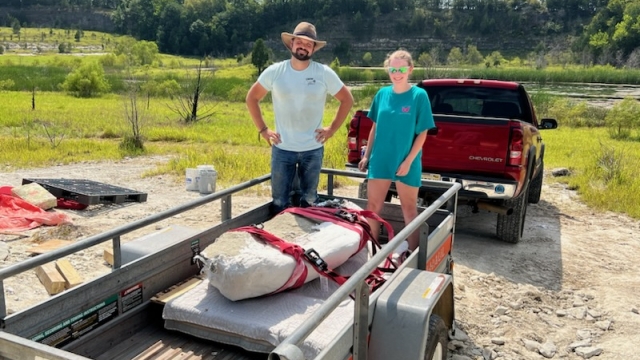A high school student made an incredible discovery in her own backyard: A 34-million-year-old whale skull.
Sixteen-year-old Lindsey Stallworth and her biology teacher, Andrew Gentry, found small bone fragments while searching for shark teeth on her family's timber property in Monroe County, Alabama.
As they dug deeper, they discovered bigger bones and eventually uncovered a piece of a lower jaw. When they found one of the creature's huge teeth, they realized it was the skull of a prehistoric whale, about four to five feet long.
Stallworth, a junior at the Alabama School of Math and Science, said she has been gathering fossils on her family's land for a very long time.
“We would go out and pick up shark teeth and fossil shells, but we never knew anyone that could tell us anything about them,” Stallworth stated in a press release from the school, obtained by Scripps News. “We just thought they were cool.”

But thanks to the help of her teacher, who relied on data from the U.S. Geological Survey and the Geological Survey of Alabama, they identified their discovery as the remains of a 34-million-year-old whale.
"The truth is, we didn’t know what we had found because only part of the skeleton was exposed on the surface," Gentry told the Washington Post. "We used dental picks to scrape away the dirt from around the bones, and we realized what it was."
Gentry also told the Washington Post that the whale's remains suggest it might be a smaller relative of Basilosaurus cetoides, potentially a Zygorhiza that could measure between 15 and 20 feet in length.
The Basilosaurus lived in the shallow seas along the Alabama coast 34 to 40 million years ago, while Zygorhiza lived around 36 million years ago in Louisiana, Alabama, and Mississippi.
Because of the whale's size, Gentry, Lindsey, and a few helpers have only managed to recover the skull thus far, and excavating the whole skeleton is expected to be a lengthy process.
"If the complete skeleton is there, it could take several years before we have the entire animal back in the lab,” Gentry said.
SEE MORE: Dinosaur discoveries link prehistoric findings to local communities
Trending stories at Scrippsnews.com




